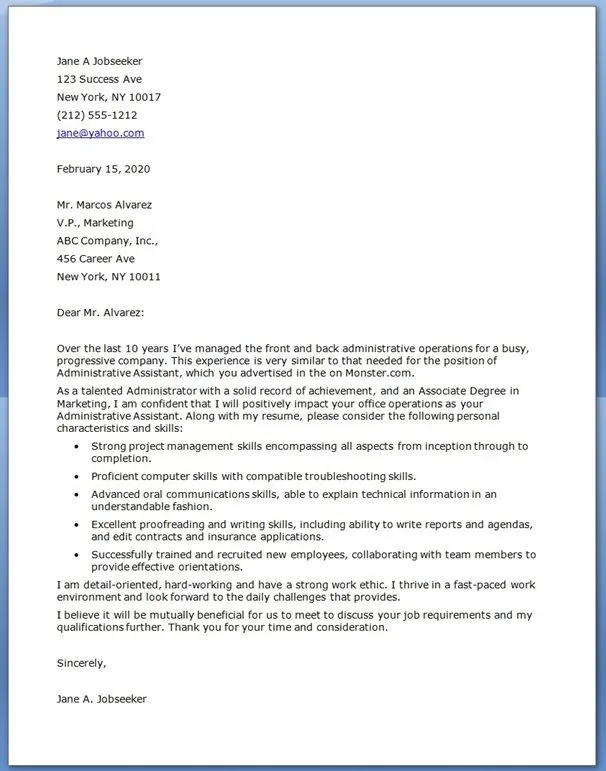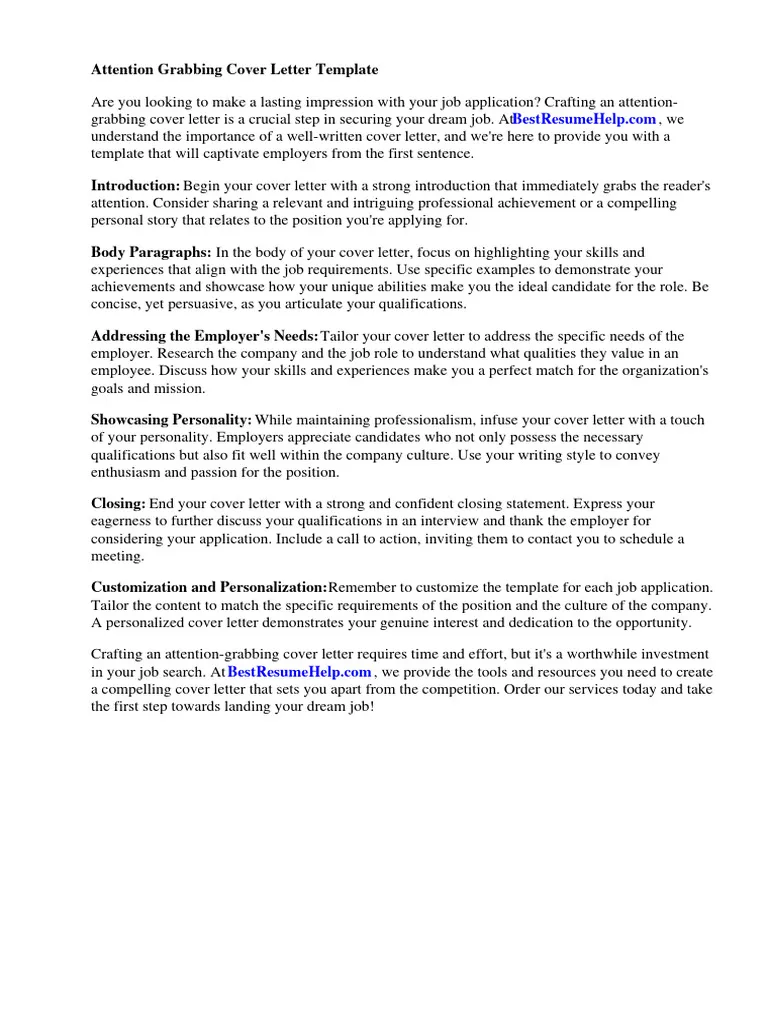Why Cover Letter Attention Matters
In the competitive landscape of job applications, a cover letter is your first, and often only, chance to make a strong impression. It is far more than a mere formality; it’s a critical tool to showcase your personality, skills, and understanding of the role. Many applications get overlooked simply because the cover letter fails to grab the reader’s attention from the get-go. Without an engaging letter, your resume might never even get a second glance. Therefore, crafting a cover letter that immediately captures the hiring manager’s interest is paramount for success in the job search. It sets the tone, builds anticipation, and encourages the recruiter to delve deeper into your qualifications and experience, making your application stand out from the stack.
Grabbing Attention from the Start
The opening of your cover letter is your most valuable real estate. It must instantly capture the reader’s interest and compel them to continue reading. Avoid generic greetings and phrases. Instead, personalize the greeting. If possible, address the hiring manager by name. Then, launch into a compelling opening statement. Consider mentioning a specific achievement, expressing genuine excitement about the opportunity, or highlighting something unique about the company that resonates with you. The key is to demonstrate you’ve done your homework and are genuinely interested. Make it clear that this isn’t a generic application. A well-crafted opening creates intrigue, signaling that you’re a candidate worth considering.
Highlight Your Value Proposition

Your cover letter should quickly communicate the value you bring to the organization. Briefly outline your key skills and how they align with the job requirements. Don’t just list your abilities; demonstrate how those skills have led to measurable results in previous roles. Emphasize how your experience directly benefits the employer. Use strong action verbs to describe your accomplishments and focus on what you can do for the company, not just what you’ve done in the past. Tailor this section to the specific role, highlighting the skills and experiences that are most relevant to the employer’s needs. This targeted approach will make your letter much more impactful and show that you understand the role and what it entails.
Tailoring Your Letter
Generic cover letters are easily spotted and often discarded. Tailoring your letter to each specific job application is crucial. This includes researching the company, understanding their culture, and customizing your letter to reflect their values and needs. Study the job description carefully, and identify the key skills and experiences the employer is seeking. Then, in your letter, explicitly connect your qualifications to those requirements. This demonstrates that you are a great fit and have taken the time to understand the role. This level of personalization shows that you’re genuinely interested in the position and that you’re not just sending out a mass application. It significantly increases your chances of making a positive impression.
5 Tips to Impress with Your Cover Letter
Tip 1: Focus on the Employer

Shift the focus from yourself to the employer. Demonstrate your understanding of their needs and how you can contribute to their goals. Research the company’s recent projects, values, and challenges. Then, use the cover letter to highlight how your skills and experiences align with their specific needs. This approach shows that you’re not just looking for a job; you’re genuinely interested in being a valuable asset to their team. Mention specific projects or initiatives that resonate with you and explain how your expertise can contribute to their success. This personalized approach will make your cover letter more engaging and memorable.
Tip 2: Show, Don’t Tell
Instead of simply stating your skills, provide concrete examples that illustrate your abilities. Instead of saying, “I am a strong communicator,” describe a situation where you successfully communicated a complex idea to a diverse audience. Use the STAR method (Situation, Task, Action, Result) to structure your examples. This provides a clear and compelling narrative that showcases your skills in action. By providing specific examples, you build credibility and demonstrate the impact you’ve made in past roles. This approach is much more effective than listing generic skills, as it gives the hiring manager a clear understanding of your capabilities.
Tip 3: Quantify Your Achievements
Whenever possible, quantify your achievements to provide tangible evidence of your impact. Use numbers, percentages, and specific data to illustrate your successes. For example, instead of saying, “Improved sales,” state, “Increased sales by 20% within six months.” Quantifiable results demonstrate the value you bring to the table and make your achievements more compelling. This approach helps the hiring manager quickly assess your capabilities and understand the value you could bring to their organization. Numbers create impact and make your accomplishments more memorable.
Tip 4: Keep it Concise

Hiring managers are busy, so your cover letter should be concise and to the point. Aim for a single page, and focus on the most relevant information. Avoid unnecessary jargon or lengthy paragraphs. Use clear and concise language and break up large blocks of text with bullet points and headings for readability. Focus on conveying the most important information quickly and efficiently. A well-structured, brief cover letter shows that you respect the reader’s time and that you can communicate effectively.
Tip 5: Proofread Meticulously
Typos, grammatical errors, and formatting inconsistencies can undermine your credibility and make a negative impression. Before submitting your cover letter, proofread it carefully. Use a spell checker and grammar checker, but also read it aloud to catch any awkward phrasing or errors that automated tools might miss. It is also a good idea to ask a friend or colleague to review your letter for a second opinion. A polished, error-free cover letter demonstrates your attention to detail and commitment to excellence.
Formatting and Design for Impact
The visual presentation of your cover letter is as important as the content. Use a professional-looking font, such as Arial or Times New Roman, and maintain consistent formatting throughout. Use clear headings and subheadings to break up the text and make it easier to read. Ensure there is sufficient white space to avoid a cluttered appearance. Consider using a simple, clean design that reflects your brand. Avoid excessive colors or graphics that might distract from the content. A well-formatted cover letter is more likely to capture the reader’s attention and leave a positive impression.
Conclusion Making a Memorable Impression

Crafting a cover letter that grabs attention is an investment in your future. By focusing on the employer, showcasing your value, providing concrete examples, and presenting a professional image, you’ll significantly increase your chances of landing an interview. Remember, your cover letter is your opportunity to make a memorable first impression. A compelling cover letter goes beyond just listing your skills and experiences; it demonstrates your understanding of the role, your enthusiasm for the opportunity, and your unique value proposition. So, take the time to craft a cover letter that truly shines and sets you apart from the competition.
